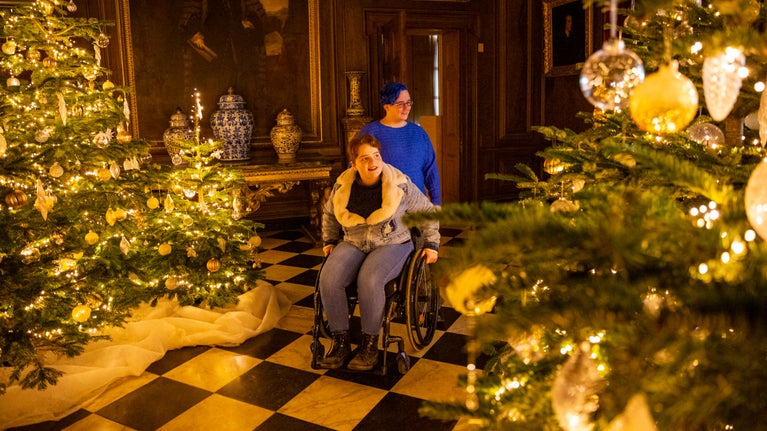
Where will you visit next?
Discover lots of gardens, historic houses, days out at the coast and more.

The talks service offers a variety of National Trust themed presentations to local groups, clubs and organisations in the East of England and the North. All the talks are given by our experienced volunteer speakers who, using their experiences and knowledge, have created a variety of talks related to the National Trust for you to choose from.
Our speakers within the East of England offer a variety of illustrated presentations to local groups, clubs and organisations.
You can hear stories about past families and servants, artists and authors, or find out more about the buildings, countryside and coastline we look after and how we care for them.
For those who are further afield, we have the option of some online presentations.
Helen Ackroyd
One place, one time, one life: Lord Fairhaven’s life at Anglesey Abbey
This talk takes a look at some of the history of the buildings at Anglesey Abbey, between the years 1236 and 1956. Learn more about the family history of Lord Fairhaven, discover where the money came from, and find out more about the house and its gardens.
Talk available in person and online
To enquire about this talk, please email the team at Anglesey Abbey: angleseyabbey@nationaltrust.org.uk
Brian Butcher
A Blickling Soap Opera
Henrietta Howard was born at Blickling and the talk supported by a presentation covers her fascinating life and times. Born into plenty she suffered family tragedies, an abusive marriage and great poverty even to the extent of living under an assumed name. By her own efforts and determination she gained a role in royal service and eventually became the mistress to a king and the servant of a queen. She took a brave and unprecedented step to resolve her situation at great personal cost, eventually becoming countess of Suffolk. This is a story which is very much a soap opera.
A Tudor Sextet: The Unfortunate Wives of Henry VIII
All the six wives of this king have their own stories to tell. This talk, supported by a presentation, brings the detail to life, including the manner in which each could be said to be unfortunate. All became embroiled in the politics of the Tudor court including the intrigue and plots by supporters and opponents. All were manipulated to varying degrees. Did two deserve to be executed? Why did one stand on firm principle to her detriment whilst anothertook a pragmatic approach and substantially benefit? Why did one survive by using her initiative? This is a brief walk through a tumultuous period in English history.
A Blickling River of Time
A river runs through the Blickling estate and this talk, supported by a presentation, covers 1,000 years of history to which it has been witness. It is the story of those who have shaped developments, including among others the Boleyns, Hobarts and Lothians. Tragedy, intrigue, politics and scandal feature as well as the building of all the houses which have stood on the current site. How did it become the first such large estate to come to the National Trust, thanks to the efforts of the last private owner? This is a rapid walk through a fascinating story which continues today.
Anne Boleyn: Saint or Sinner?
Anne Boleyn must be the most infamous queen consort in the history of the country. Having played an influential role in religious reform, how did she fall from grace and suffer execution? Was she even guilty of her alleged crimes or was it case of judicial murder to satisfy the needs of the king? The talk, supported by a presentation, covers the life and times of Anne including events leading up to the first execution of a queen consort. People are left to judge for themselves whether Anne was the saint of subsequent Protestant writing or the heretic sinner of Catholic commentators.
Talks available in person only
-
Bunty Gotts
The Wife, the Mistress and the Widow
The Wife, (Jacobean), the Mistress, (Georgian) and the Widow, (Victorian) is a talk about three very strong, but very different women, who each played an important part in the survival of Blickling.
The Thirties Guest Book
A glimpse of life at Blickling in the thirties, seen through the servant’s eyes. Bunty uses the transcripts of recordings taken of the staff who worked at Blickling Hall in the thirties, along with her own notes of conversations she had with the cook, Flo Wadlow, who until her death at the age of 100, was a regular visitor to Blickling.
Talks available in person only
To enquire about any of these talks, please email the team at Blickling: blickling@nationaltrust.org.uk
Anne Guymer
Oxburgh Hall – Raising the Roof: Medieval Rafters, Rats and Treasure
It started with a collapsed dormer window! As a result a £6 million project is underway at Oxburgh Hall, which will see repairs carried out to the roof, windows, chimneys and medieval gatehouse façade, securing Oxburgh’s future and the collection within. This presentation details the work and progress on the building, the 86 tonnes of scaffolding, rebuilding the dormer windows, repairing the 27 chimneys and replacing 17,000 roof tiles – together with an update on the exciting finds that have resulted in Oxburgh Hall being nominated for an acclaimed worldwide archelogy award. The rafters ravaged by the Civil War, the dormer windows being rebuilt brick by brick, the clothing samples from the 16th/17th century stolen by medieval rats and the 15th/16th century illuminated manuscripts with their gold and blue original work still visible. The talk also introduces a number of fascinating Bedingfelds who have lived at Oxburgh Hall.
Talk available in person and online
To enquire about this talk, please email the team at Oxburgh: oxburghestate@nationaltrust.org.uk
Richard Symes
Turbulence to Tranquility, the History of Dunwich Heath
An illustrated talk about the extraordinary tales of people and events from the 18th century to today. How the heath has changed. From the days of smuggling to Coastguards then on to the dramatic events during WW1 and WW2. The Heath was certainly not always the quiet and peaceful place that it is today.
Talk available in person and online
To enquire about this talk, please email the team at Dunwich Heath: dunwichheath@nationaltrust.org.uk
Pat Hodgkins
John Constable: The Man and His Landscape
This is a talk illustrated both by copies of some of Constable’s celebrated paintings, and also photographs of the Stour Valley as it is today. The accompanying talk covers the life and work of John Constable and also how the valley and buildings at Flatford are used now. For specialist art groups there can be more concentration on Constable’s style of painting and sketching. Many relevant books are made available for those who wish to see them.
Talk available in person only
To enquire about this talk, please email the team at Flatford: flatfordbridgecottage@nationaltrust.org.uk
David Simmonds
10 Tales of the National Trust
This fully illustrated talk is a medley made up of ten different tales or sections dealing with varied aspects of the National Trust. These range from David Simmonds’ first involvement with the Trust over 50 years ago to the connection between the Tale of Peter Rabbit and the Trust. Another tale concerns the history of the Trust, but it would spoil the talk to give too much away!
Coast of East Anglia
The Trust owns many parts of the East Anglian coast and the adjoining countryside. As well as looking at the birds and scenery, the talk considers the historical importance of the sites. This fully illustrated talk can be altered to meet the wishes of the audience.
Coast of Essex
Essex is reputed to have the longest coastline of any English county! This fully illustrated talk looks at many aspects of the Essex coast with particular emphasis on National Trust properties. Natural history, authors, seaside resorts and boating are all featured.
National Trust in East Anglia
There are Trust properties throughout East Anglia. This talk looks at these places and can be adapted to meet the particular interest of the audience, be it history, gardens, the coast or famous authors.
History of the National Trust
Great oak trees grow from tiny acorns and this is certainly true of the National Trust. From its humble beginnings in 1895, the Trust has grown to have over four million members, 350 historic buildings, almost 750 miles of coast and getting on for a 1,000 square miles of countryside. This fully illustrated talk looks at how the National Trust has developed over the past 120+ years. It goes on to examine how the Trust has grown in Essex, before suggesting ways in which it might change in the future.
Hatfield Forest
The Forest is the only surviving medieval hunting forest and has much of interest to nature lovers and historians. Talks cover the history of the Forest, techniques of woodland management, the plants and animals to be found and the facilities for visitors. The talk can be combined with a guided walk in the Forest.
Scouts, Guides and the National Trust
There are many links between the National Trust and the Scouting and Guide movements. These go right back to the first Scout camp organised by Robert Baden-Powell in 1907 on Brownsea Island which is now owned by the Trust. These links continue today with a common desire to get children and young people off their computers and mobile phones and into the countryside to discover wildlife, new skills and crafts. This fully illustrated talk looks at these links and how they continue to develop.
Treasures of the National Trust
This fully illustrated talk looks at some of the treasures of the National Trust, starting with the founders back in 1895. Using seven different categories ranging from coast and country to great houses, the talk uses examples, especially from Essex, to examine the many and varied treasures of the Trust.
Thomas Hardy and the National Trust
Thomas Hardy is one of our most popular classical authors and poets. His birthplace and home for many years are both owned by the Trust, together with many of the places mentioned in his works. This illustrated talk looks at the author and the Trust.
Talks available in person and online
To enquire about any of these talks, please email the team at Hatfield Forest: hatfieldforest@nationaltrust.org.uk
To enquire about a talk, or discuss one already booked, the contact email address for each place is listed with the speakers descriptions above. Please use the email link to contact our teams and they'll arrange for the speaker to discuss with you.
All our volunteers are great ambassadors for the work we are doing in the East of England, and the talks they offer help to promote our places and projects that they are passionate about. While we don't charge a fee for our talks, any donations we receive help support the places we care for. Donations, as well as the speakers travel expenses, will all be discussed prior to booking.

The volunteer talks service in the North of England offers a variety of illustrated National Trust themed presentations to local groups, clubs and organisations, all given by our experienced volunteer speakers. You can hear about past families, spooky tales of ancient properties, gardens and estates or find out more about the buildings, countryside and coastline we look after and how we care for them. For those who are further afield, we offer some online presentations.
Discover what was found when Bishop’s representatives made visits to English Monasteries & Nunneries.
A spoken and illustrated 'sampler' of handwoven and sewn work in historic houses including carpets, embroidery, tapestry and other needlework.
An 18th-century woman challenged the idea that women should be seen and not heard. Hear about the creation and legacy of the Bluestocking Movement.
Discover the National Trust’s properties north of the Tees.
The history of the Delaval family and the work done by the National Trust since taking over in 2009.
Development of the hall under the Fenwicks, Blacketts and Trevelyans.
An overview of the house and gardens plus current information.
The development of the pleasure gardens under George Bowes; subsequent inheritance by Mary Eleanor Bowes and what happened next.
Souter lighthouse is said to be the world's first purpose built electric lighthouse, but some say it's the third ...
Why was Souter lighthouse built between the well marked rivers of the Tyne and the Wear?
The story of the Trow Rocks experimental gun and the Roberts and Kitchener Batteries 1921-1926
10 objects tell the story of the rise, fall and regeneration of the Lower Ouseburn Valley
The lighthouse(s) that moved; the lighthouse that never was; the very first Trinity House lighthouses; the very first electric lighthouse; "wreckers" and mysterious lights
In the Souter Lighthouse collection is a Maling Marmalade Jar. This talk tells the story of the Maling Pottery company from its origins in North Hylton to its rise and fall in Ouseburn.
A wander through Yorkshire with the National Trust.
This talk looks at the links between Burgundian religious orders, who were the mother houses of: several Yorkshire abbeys, churches and priories, including
- one Benedictine abbey (Selby)
- two Cluniac priories (Pontefract and Monk Bretton)
- one parish chirch (Rotherham Minster) and
- eight Cistercian abbeys
Find out in our history, how Yorkshire began and by whom. Discover when, for the first time, the word 'Yorkshire' was written and why.
How the eight Yorkshire Cistercian abbeys were instrumental in "levelling up" the local economy following the devastation that accompanied the Norman Conquest.
The beautiful Yorkshire coastline was scarred for life with the birth of a new and unique industry never seen before in England!
Exploring Nidderdale and its history.
An introduction to one of North Yorkshire’s oldest and most influential families.
Discover the only accessible Carthusian monastic site in the country, its reclusive monks and the links to a 19th-century industrial Titan and his family.
What life was like for the Terry family (of Terry’s chocolates) at their York home, Goddards
How the 19th-century 'noveau riche' Green family rose in society, mixed with royalty but nearly lost their reputation and how eccentric Frank Green created Treasurer's House.
Is Treasurer's House really the most haunted house in York? Whatever your view, dare to hear the scary stories and creepy tales.
National Trust gardens in the York area- Treasurer's House, Goddards and Beningbrough Hall.
The History of the House and Estate and the bitter family rivalry that saw its creation.
'Heavens to Murgatroyd': the history of the site and the 17th-century manor house, telling tales of the ambition, success and failure of those who lived and worked there.
An introduction to the long and varied history of Nunnington Hall, and its wide variety of residents.
The history of the Abbey from its creation to become one of the most powerful abbeys in England, then to its dissolution.
Maintaining a World Heritage Site and keeping it in pristine condition.
407 years of Cistercian life in a remote valley in Yorkshire which almost didn't happen. The incredible story of poverty, to unimaginable wealth and status, then to lose it all!
'A garden of pleasure, tranquility and hidden secrets'. Studley Royal Water Garden is a UNESCO World Heritage Site, with many 'soft on the eye' views. Above all, it is a peaceful place to relax with ones own thoughts. Learn more about this beautiful location, with stories of personal struggles, pleasure and enjoyment.
The National Trust at it’s Best
A pictorial journey of how the National Trust (NT) has transformed Fountains Abbey & Studley Royal 800 acre estate. Using unseen photographs showing that the site had lost its beauty and tranquility due to lack of funding, until the NT took ownership in 1983, and carefully restored it into a spectacular UNESCO World Heritage Site for everyone to enjoy.
The Skell Valley Project bears witness to the benefits of working with nature, controlling extreme river floods and empowering the local community, to make the valley landscape resilient to future weather extremes. This vital project showcases the National Trust as its best and safeguards the longevity for a significant UNESCO World Heritage Site.
Bubbles, Temptations, Culture, Genius. The history of the site and its owners, in particular John and William Aislabie who created the Water Gardens and how it ultimately became a World Heritage Site.
David Banks is an international business developer in the IT industry for private and UK national public sectors, specialising in digital media technologies. Now retired to North Yorkshire, enjoys tour guiding at his local National Trust, Fountains Abbey & Studley Royal site and during the last few years has become a successful speaker for the National Trust Talks Service - North.
His areas covered are: Skipton, Richmond, Stokesley, Robin Hoods Bay, Scarborough, Flamborough, Hull, Goole, Wakefield, Bradford.
Having spent 34 years working for BT (and its predecessors, the GPO and PO Telephones) Phil took early retirement at 53. This enabled him to pursue a second career at the National Trust where he spent the next enjoyable 12 years at Ormesby Hall, finishing as the Property Administrator. Since his retirement from the Trust 13 years ago Phil has continued his links with the Trust as a volunteer Talks Service speaker and, because his love of all things historical, as a Property Guide at Mount Grace Priory and as Chairman of his village Local History Society
His areas covered are: Co. Durham, Teesside & North Yorks.
David is a retired Chartered Accountant. He spent most of his life in industry as a Finance Director in the oil and gas and also medical sectors. This also involved international mergers and acquisitions. Since 2014 he has volunteered at Fountains Abbey and Studley Royal, where he has been a Guide for the last 11 years. He is also a musician. He has always loved history and over the last seven years has been on history trips including Israel, Greece, Turkey and Egypt.
His areas covered are: Harrogate Knaresborough, York, Pateley Bridge, outskirts of Leeds. Ripon, Helmsley.
After a career as an NHS Clinical Scientist John retired in 2019 to pursue a number of opportunities volunteering as a guide and heritage researcher for the National Trust (Souter Lighthouse), English Heritage (Bessie Surtees House), Trinity House in Newcastle, and The Ouseburn Trust. John has a passion for local history and heritage and is a qualified Newcastle City Guide.
His areas covered are: Northumberland
Liz has volunteered as a speaker for the National Trust since 1997. She also volunteers in various roles at Seaton Delaval Hall, Northumberland. Professionally, Liz worked for over ten years in London as a bi-lingual (German) PA before moving to the North East in 1991. During the 1990s, she worked part time for a management training company and taught German and French to GCSE level, delivering evening classes. In the 2000's, Liz trained as a Life Coach and NLP Practitioner and went on to establish her own businesses delivering personal development training and support. Since 2012, Liz has been a regular volunteer at major sporting and heritage events in the UK and abroad.
Her areas covered are: Northumberland, Newcastle upon Tyne, North Tyneside, South Tyneside, Sunderland, Co Durham (Durham and north of county). From April to October inclusive, this can include a 30 mile radius of Harrogate.
Peter retired from a career in management training and pre-retirement coaching in 2015 since when he has volunteered as a guide at Fountains Abbey. The training he received there sparked an interest in the rich history of Yorkshire's abbeys. In 2023 he joined the North Talks service, which has enabled him to pursue this interest in three areas in particular: - the vital role of the Cistercians in rebuilding Yorkshire after the devastation wreaked by William's army in 1069-70 (the Harrying of the North) - the Burgundian origins of many of Yorkshire's abbeys - their numerous literary connections, from Caedmon to Wordsworth, Walter Scott to Bram Stoker.
His areas covered are: - most of West Yorkshire, Skipton, Harrogate, Knaresborough, Pateley Bridge and Selby in North Yorkshire, and parts of Lancashire including Colne, Nelson and Burnley.
Retiring after 25 years in the Civil Service, Rowena was keen to do something totally different. She now volunteers with the National Trust, as a guide at Fountains Abbey and Studley Royal and also a volunteer speaker with the Talks Service. She also volunteers at Ripon Museum Trust, and enjoys the range of new experiences those roles provide.
Her areas covered are: Harrogate, Ripon, Thirsk, Otley, Ilkley, Leeds, York, Wetherby, Skipton, Wakefield, and Northallerton with other close by areas considered.
Glennis Whyte BA (Hons) MA. has volunteered with the National Trust for over 15 years as an historical researcher and property guide. She gives talks in Yorkshire to raise funds and promote the aims of the Trust and coordinates the NT Volunteer Talks Service (North), and has a particular interest in 18th Century history. In her career she was a Research Fellow at York University and a senior commissioning manager in NHS Public Health. Before retirement Glennis worked with all main Government departments on policy and practice related to substance misuse.
Her areas covered are: York
To organise a talk for your group, please note down the name of the speaker and talk you are interested in, and send an email with those details and your contact information to our talks service email address. Once submitted, our team will forward the email onto the speaker and they will get in touch with you directly to discuss dates, topics and practical arrangements. Please note that each speaker has a general travel distance they are willing to travel to give a talk. Most of our speakers are based in North Yorkshire and the North East, but please send us an enquiry and we can email you a helpful map which illustrates general travel distances.
Our volunteers are great ambassadors for the work we are doing in the North of England. The talks they offer help to support our conservation work in this part of the country and promote the projects that we’re passionate about.
We don’t charge a fixed fee for our talks, but instead, we welcome a donation in lieu which can be agreed with your speaker in advance. Please note: all financial rules covering registered charities will be adhered to.
Our speakers will provide a projector for showing their images, but may not have a screen. They will tell you what equipment you will need to provide at the talk venue. In turn, if your audience has particular requirements please discuss those in good time before the talk.
Our speakers will comply with whatever public health measures are in place at the time of the talk and are happy to discuss your preferences.
If for any reason the speaker is unable to attend your meeting, you'll be contacted as soon as possible by phone or email. If circumstances allow, we'll try to arrange an alternative speaker or a new date for your talk. If you need to cancel or postpone a booking, please contact your speaker.
To enquire about our service and request a talk, please email us at NorthTalksService@nationaltrust.org.uk. The inbox is checked Monday to Friday (excluding bank holidays) and we’ll do our best to get back to you as soon as possible.

Discover lots of gardens, historic houses, days out at the coast and more.
Discover the best things to do in Suffolk, in East Anglia. From its much-loved coastline to its historic houses and medieval wool towns. Constable Country is also still very much as landscape artist, John Constable, painted it.

From dramatic coastlines to hidden woodlands, and from grand historic houses to world-famous landmarks, the North East is bursting with unforgettable days out. Explore characterful country estates, stroll through vibrant gardens in full bloom, and uncover the stories behind castles, ruins, and a UNESCO World Heritage Site. Whether you're seeking family adventures, peaceful walks, or a journey through history, there's something special waiting for you in every corner of the North East.
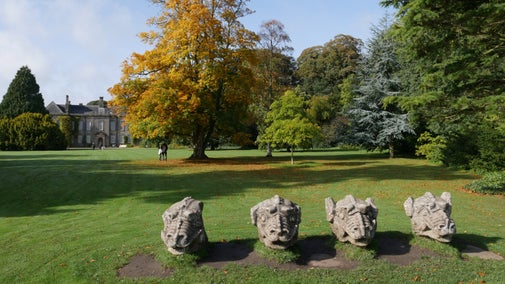
With big skies, a stunning coastline, magnificent houses and gardens to discover, you're spoilt for choice when visiting Norfolk in East Anglia.
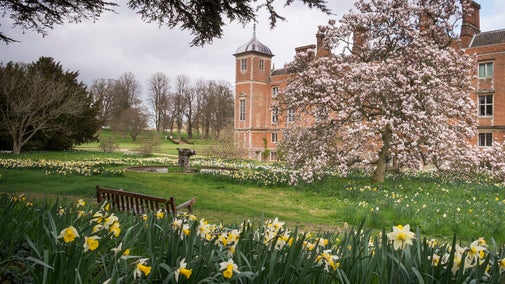
Discover ancient forests, countryside and traditional quaint, quiet villages in the counties of Essex, Bedfordshire and Hertfordshire.

With distinctive fenland landscapes, grand houses and lush farmland, discover all there is to see at National Trust places in Cambridgeshire, in East Anglia.
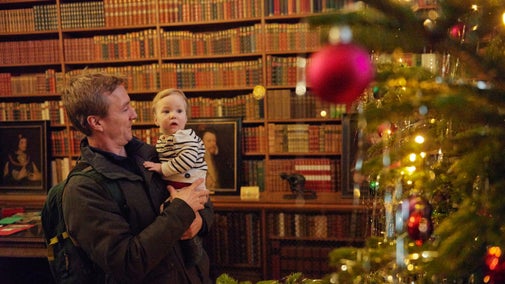
Discover the delights of Yorkshire including abbey ruins, magnificent houses and gardens, wild moorland and some fantastic stretches of coastline.
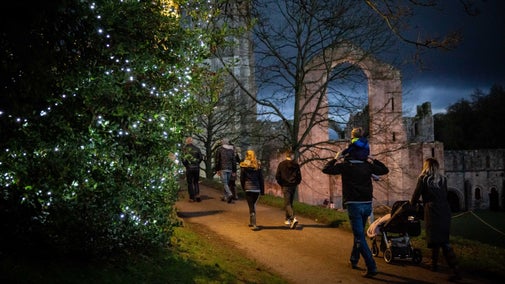
By sharing your email address you’re agreeing to receive marketing emails from the National Trust and confirm you’re 18 years old or over. Please see our for more information on how we look after your personal data.